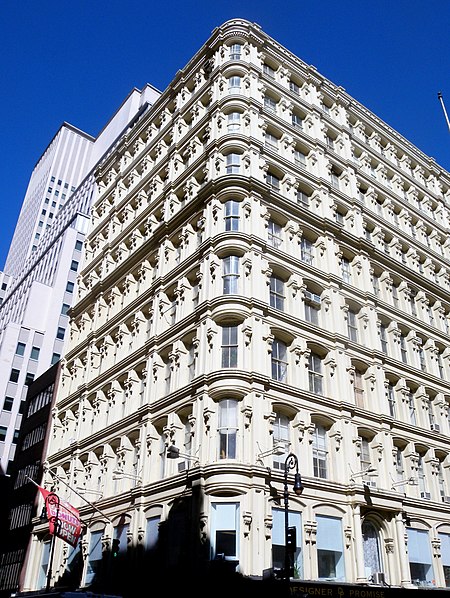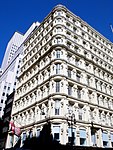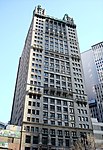Bennett Building (New York City)

The Bennett Building is a cast-iron building in the Financial District of Lower Manhattan in New York City. The building is on the western side of Nassau Street, spanning the entire block from Fulton Street to Ann Street. While the Bennett Building contains a primary address of 93-99 Nassau Street, it also has entrances at 139 Fulton Street and 30 Ann Street. The building was designed by Arthur D. Gilman in the French Second Empire style, with expansions by James M. Farnsworth that closely followed Gilman's original design. The Bennett Building contains a fully realized cast-iron facade, the largest known such example in the world, and is one of two remaining Second Empire-style office buildings south of Canal Street with cast-iron faces. The building's three fully designed facades face Fulton, Nassau, and Ann Streets, while the fourth side faces an adjacent property and is made of plain brick. The building's namesake was James Gordon Bennett Jr., who commissioned the project as an investment. The original structure designed by Gilman was seven stories tall, including a mansard roof. Real estate investor John Pettit bought the building in 1889, and he hired Farnsworth to design two expansions. The original mansard roof was demolished to allow the addition of the top four stories between 1890 and 1892, while an eleven-story annex was erected on Ann Street in 1894. After Pettit disappeared in 1898, ownership of the Bennett Building passed to several other companies and individuals, who made minor modifications to the building. In 1995, the New York City Landmarks Preservation Commission designated the building a New York City landmark. The Bennett Building is also a contributing property to the Fulton–Nassau Historic District, a National Register of Historic Places district created in 2005.
Excerpt from the Wikipedia article Bennett Building (New York City) (License: CC BY-SA 3.0, Authors, Images).Bennett Building (New York City)
Fulton Street, New York Manhattan
Geographical coordinates (GPS) Address External links Nearby Places Show on map
Geographical coordinates (GPS)
| Latitude | Longitude |
|---|---|
| N 40.7105 ° | E -74.0077 ° |
Address
Bennett Building
Fulton Street
10038 New York, Manhattan
New York, United States
Open on Google Maps










